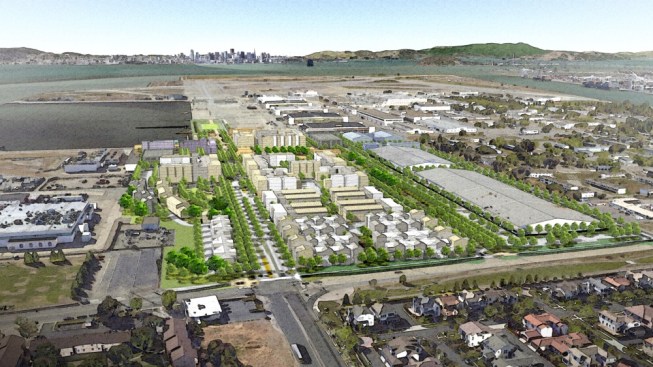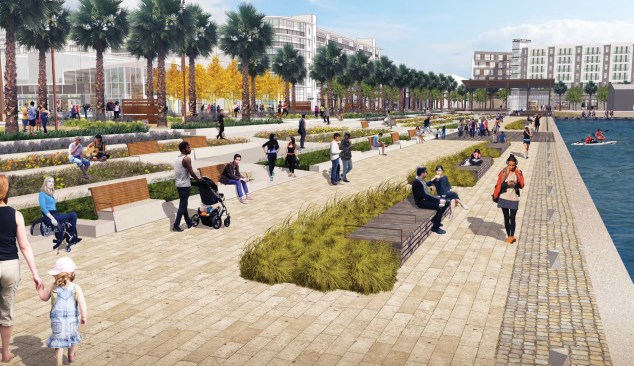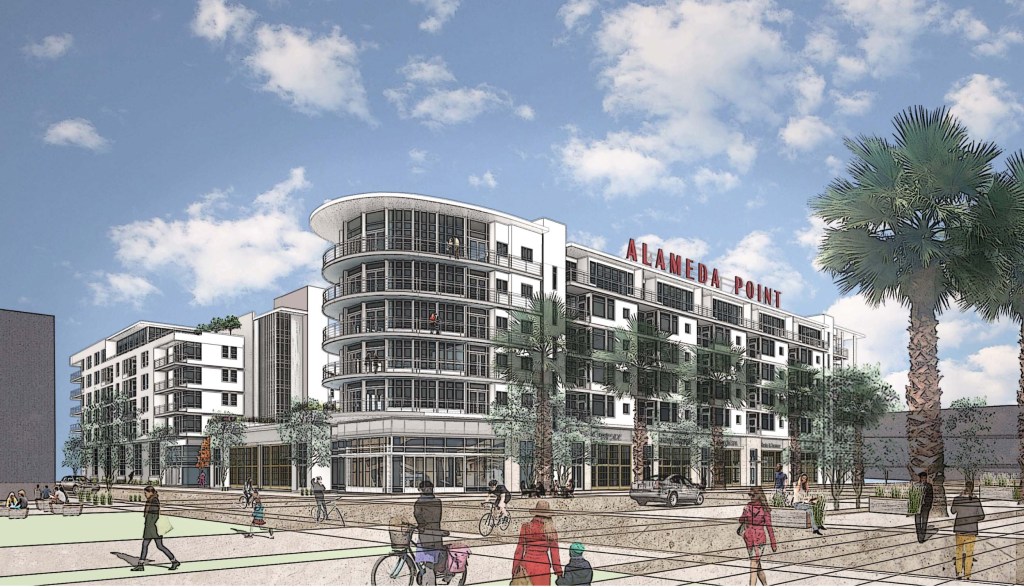Trammell Crow Residential has announced that its joint venture, Alameda Point Partners, has closed escrow on the first phase of a $1 billion transit-oriented waterfront development within commuting distance of San Francisco.
The city of Alameda, Calif., has transferred approximately 30 acres of the 68-acre future development site, known now as Site A, to the Alameda Point Partners venture, which includes Trammell Crow, srmErnst Development Partners, Madison Marquette, Eden Housing, and financial partner Cypress Equity Investments. Construction is set to begin on the project’s $500 million first phase within the next 30 days.
Site A is part of the former Naval Air Station Alameda, which closed in 1997 and has since lain undeveloped. Alameda Point Partners was originally selected by the city of Alameda to develop the site in 2014, and Trammell Crow Residential (TCR) entered the joint venture when Thompson Dorfman Partners, an original venture partner, merged with TCR in 2015.

“The base closed over 20 years ago and several attempts to redevelop it failed. Due to extensive infrastructure requirements, this is a very complicated development,” said Bruce Dorfman, senior managing director of TCR’s Northern California division, in a statement. “TCR looks forward to delivering an integrated master planned community on the bayfront which will not only be a model for other cities struggling with similar redevelopment sites, but also provide the new residents and the city of Alameda with significant public benefits … .”
The first phase is expected to contain 673 residential units, 130 of which will be affordable for low- and very low–income households, and 310 are projected to be affordable for middle-income households. Eight acres of parks and open space, 93,000 square feet of retail, and funding for the Seaplane Lagoon Ferry Terminal are also included in the master plan. The first two to three years of construction will focus on the creation of new infrastructure for the community, and the first residential units are expected to be delivered by 2021.
Developers and builders tied to the community include Eden Housing, which will build 70 units of affordable family housing and 60 units of affordable seniors housing; Trumark Homes, which will develop 123 townhomes; Cypress Equity Investments (CEI), which will develop a 200-unit apartment community; and a TCR/CEI joint venture, which will develop 220 apartment units and 15,000 square feet of retail.
At full build-out, Site A will contain 800 residential units, 15 acres of parks, up to 600,000 square feet of commercial space, and new transportation services and facilities, including a ferry terminal that will provide residents with transportation to downtown San Francisco within 20 minutes. TCR is also exploring the possibility of building a teacher and faculty housing community on the property in partnership with Thompson Dorfman company Education Housing Partners.

“Besides offering unparalleled views of the San Francisco skyline and the Bay, with the new ferry and other transit options, Alameda Point is incredibly conveniently located to many of the region’s largest employment centers,” said Dorfman. “Further, with the development of Site A, [the] Alameda Point [region] will become much more viable for companies that are seeking affordable expansion space with new quality housing for their employees. And Alameda is a walkable city with excellent shopping, schools, restaurants, beaches, and sense of community.”
Infrastructure improvements will include new water, sewer, electrical, and gas lines and newly paved streets with bike and transit lanes. Apart from the ferry, transportation solutions will include bike and car sharing, bus rapid transit, and “last mile” shuttle service to BART.
“The goal at Site A is to reduce dependency on the automobile and improve alternative modes of transportation by encouraging people to shift a greater share of their trips to public transit, biking, and walking,” Dorfman said. “Our investment today is a long-range strategy to alleviate traffic and allow future generations of residents to travel more easily on and off the island.”
The project is expected to create 1,500 permanent on-site jobs and 2,500 direct construction jobs, and to enable thousands of future jobs. All of its buildings will be constructed to meet LEED Gold Certified standards and the latest California Building Standards Code for solar photovoltaics.
“Each of the buildings incorporates design elements that were inspired by the historical use of the base,” said Dorfman. “A number of existing structures will be renovated and incorporated into the community. The development will feature new and old, and feel both authentic and original. It will be pure Alameda.”
